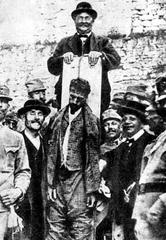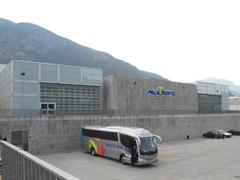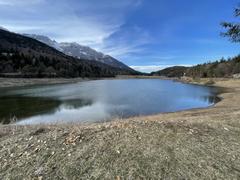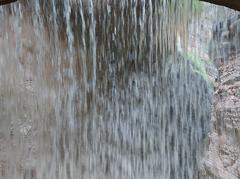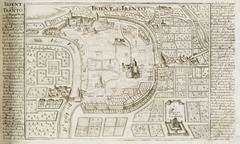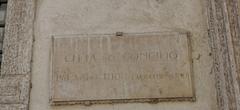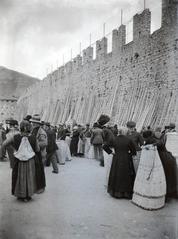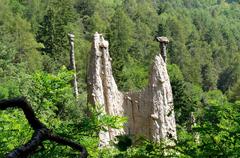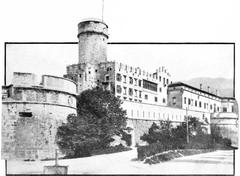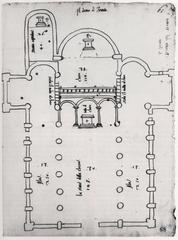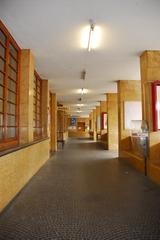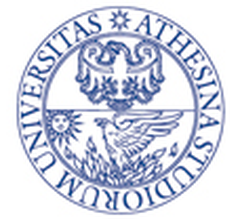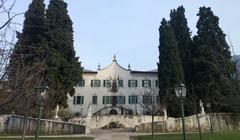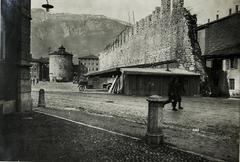
Santa Maria Maggiore Church Trento, Italy: Visiting Hours, Tickets, and Historical Sites Guide
Date: 04/07/2025
Introduction
Santa Maria Maggiore Church, prominently located in the heart of Trento, is a stunning embodiment of Renaissance artistry, religious heritage, and historical significance. Commissioned in the early 16th century by Prince-Bishop Bernardo Clesio and designed by Antonio Medaglia, the basilica is renowned for its architectural grandeur and as a pivotal site of the Council of Trent (1545–1563)—a defining event of the Catholic Counter-Reformation. The church’s layered history, from Roman origins through medieval and Renaissance transformations, is manifest in its red Verona marble façade, soaring bell tower, and richly decorated interior, drawing art lovers, historians, and spiritual pilgrims alike.
This guide provides comprehensive, practical information for visitors, including Santa Maria Maggiore’s visiting hours, ticketing policies, accessibility, nearby attractions, and essential travel tips. Whether you are interested in its art, architecture, spiritual resonance, or broader historical context, this article will help you plan a rewarding visit to one of Trento’s most cherished landmarks. For the latest updates and resources, consult the official Santa Maria Maggiore website and the Trento Tourism portal.
Table of Contents
- Historical Overview
- Architectural and Artistic Features
- Visiting Santa Maria Maggiore: Practical Information
- Nearby Attractions and Suggested Itineraries
- Travel Tips and Weather Considerations
- Frequently Asked Questions (FAQ)
- Visuals and Media Suggestions
- Conclusion and Further Resources
Historical Overview
Roman Beginnings and Early Christian Foundations
The site of Santa Maria Maggiore traces its roots to the Roman Forum of Tridentum. Archaeological investigations have revealed remnants of Roman public buildings, possibly including a bath complex, beneath the current church. The first Christian basilica on this site dates to the late 5th or early 6th centuries, featuring a three-nave layout.
Medieval and Renaissance Transformations
Through the Middle Ages, the church underwent several reconstructions. Carolingian liturgical furnishings were introduced in the 8th–9th centuries, and by the 13th century, a Gothic structure with two naves and distinctive medieval features stood here. The current Renaissance church was commissioned between 1520 and 1524 by Prince-Bishop Bernardo Clesio, with design by Antonio Medaglia, reflecting inspiration from the Basilica of Sant’Andrea in Mantua.
The Council of Trent and Counter-Reformation
Santa Maria Maggiore is most historically significant as the venue for several sessions during the final years of the Council of Trent (1545–1563). The council’s decrees, issued within these walls, played a defining role in the Catholic Counter-Reformation, reaffirming core doctrines and influencing church art, liturgy, and architecture across Europe. The basilica preserves artworks and memorials commemorating this epoch (World City Trail, Life in Italy).
Architectural and Artistic Features
Exterior
Façade and Bell Tower
The striking Renaissance façade blends red Verona marble and white Trentino stone, featuring a classical portal with triangular pediment and pilasters. The 53-meter-high bell tower, with its transition from square base to octagonal spire, is the tallest in Trento and serves as a prominent city landmark.
Portals and Decorative Elements
Three portals provide access to the church. The central portal’s tympanum is adorned with a relief of the Madonna and Child, flanked by angels, underscoring the church’s Marian dedication.
Interior
Layout and Spatial Organization
The basilica follows a Latin cross plan with a single nave and two aisles, separated by Corinthian columns. The nave’s barrel vault is decorated with stucco and painted medallions, and the dome at the transept crossing features frescoes depicting scenes from the Virgin Mary’s life.
Artistic Highlights
- Frescoes and Paintings: The apse and dome are adorned with Renaissance frescoes of the Annunciation, Nativity, and Assumption. The Chapel of the Blessed Sacrament features a canvas by Marcello Fogolino depicting the Last Supper.
- Sculpture and Decorative Arts: The polychrome marble main altar is crowned by a sculpted group of the Madonna and Child. Funerary monuments, the white marble pulpit, and intricately carved wooden choir stalls exemplify Renaissance and Baroque craftsmanship.
- Stained Glass: Stained glass windows from the late 19th and early 20th centuries depict biblical scenes, infusing the interior with vibrant colored light.
- Historic Organ: The basilica houses a significant pipe organ, incorporating elements from the original 16th-century instrument.
Architectural Innovations and Restoration
Santa Maria Maggiore is recognized for its early adoption of Renaissance principles in the Alpine region, drawing from architectural influences such as Bramante and Alberti. Recent restoration campaigns have addressed the preservation of frescoes and marble altars, ensuring the church’s artistic legacy endures (Trentino Cultura).
Visiting Santa Maria Maggiore: Practical Information
Opening Hours
- Tuesday–Sunday: 9:00 AM to 6:00 PM
- Closed: Mondays and select public holidays
- Visiting hours may vary during religious services, holidays, or special events. Always check the official website or Trento Tourism portal for updates.
Tickets and Admission
- General Admission: Free
- Guided Tours/Special Exhibitions: Usually require a ticket (€5–€10), bookable online or at the church’s visitor center.
- Donations: Encouraged to support ongoing preservation efforts.
Accessibility
- Wheelchair Access: Ramps and accessible restrooms are available.
- Visitors with Disabilities: Contact the church in advance for tailored support.
Facilities and Amenities
- Restrooms and a small gift shop are available.
- No café on-site, but numerous restaurants and cafés are nearby given the church’s central location.
- Photography: Allowed without flash; restrictions apply during services. Tripods or professional equipment require prior permission.
Dress Code and Visitor Etiquette
- Modest attire is required (shoulders and knees covered). Silence and respect are expected, especially during Mass or religious ceremonies.
Nearby Attractions and Suggested Itineraries
While visiting Santa Maria Maggiore, consider exploring:
- Piazza Duomo: Featuring the Cathedral of San Vigilio and Palazzo Pretorio.
- Buonconsiglio Castle: Trento’s largest castle and museum complex.
- Museo Diocesano Tridentino: Exhibiting artifacts from the Council of Trent and regional ecclesiastical history.
- MUSE Science Museum: A leading science and natural history institution.
Most sites are within walking distance, making it easy to combine them in a single day’s itinerary.
Travel Tips and Weather Considerations
- Best Months: Late spring to early autumn, with July and August being the warmest.
- Rainfall: Most common in June; December is driest (Triphobo).
- Arrive Early: For a quieter, more contemplative experience and optimal photography conditions.
- Dress in Layers: Weather can be variable, especially in the shoulder seasons.
Frequently Asked Questions (FAQ)
Q: What are Santa Maria Maggiore’s visiting hours?
A: Tuesday to Sunday, 9:00 AM to 6:00 PM; closed Mondays.
Q: Is there an entrance fee?
A: General admission is free; some tours or exhibitions require a ticket.
Q: Are guided tours available and in English?
A: Yes, guided tours in multiple languages (including English) are available and recommended.
Q: Is the church accessible for people with disabilities?
A: Yes, with ramps and accessible restrooms.
Q: Are there nearby attractions worth visiting?
A: Yes—Piazza Duomo, Buonconsiglio Castle, Museo Diocesano Tridentino, and MUSE Science Museum are all nearby.
Q: Can visitors attend religious services?
A: Yes, Mass and other services are open to the public.
Q: Is photography permitted?
A: Yes, without flash and outside of services.
Visuals and Media Suggestions
- Images: Include high-resolution photos of the façade (“Santa Maria Maggiore Trento exterior”), stained glass, frescoes, and the main altar (“Interior altarpiece Santa Maria Maggiore Trento”).
- Interactive Map: Embed a map showing the church’s location and nearby attractions.
- Virtual Tours: Available through Trentino Cultura and the Trento Tourism portal.
- Alt Text: Use descriptive alt text for accessibility.
Conclusion and Further Resources
Santa Maria Maggiore is more than a historical monument—it is a vibrant center of faith, art, and community, offering insight into Trento’s pivotal role in European history. With free general admission, accessible facilities, and a wealth of nearby attractions, it is a highlight for any visitor to Trento. Plan your visit around published hours, respect local customs, and enhance your experience with guided tours or the Audiala app for audio content.
For details on events, guided tours, and real-time updates, consult the official Santa Maria Maggiore website and Trento Tourism.
References
- Santa Maria Maggiore Trento: Visiting Hours, Tickets, and Historical Guide, 2025, Santa Maria Maggiore Official Website
- Architectural and Artistic Features, 2025, Trentino Cultura, Trentino Cultura
- Visiting Santa Maria Maggiore in Trento: History, Tickets, and Travel Tips, 2025, World City Trail & Life in Italy, World City Trail, Life in Italy
- Santa Maria Maggiore Trento: Visiting Hours, Tickets & Tips for Exploring Trento’s Historic Church, 2025, Triphobo, Triphobo
- Trento Tourism Official Website, 2025, Trento Tourism






